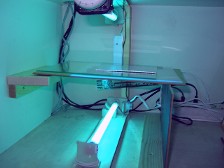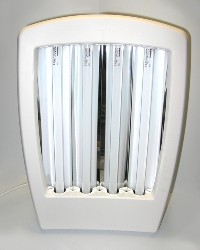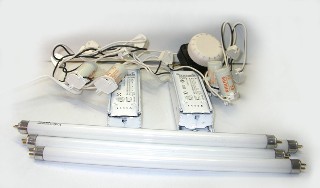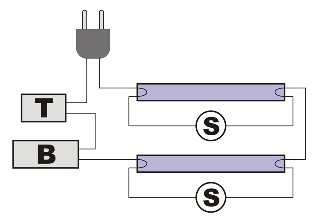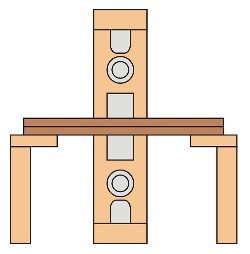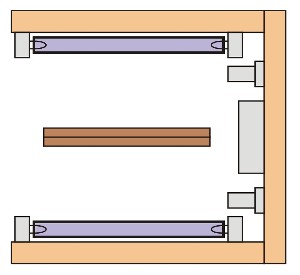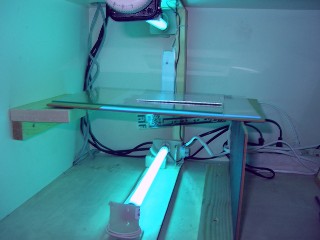UV-Lighter
For etching purposes
This subject was published in Modelspoormagazine nr44.
We need an ultraviolet (UV) lightsource. There are special, powerful lamps available, but they are expensive and need a dedicated cooling device to make them last. Comùmercial UV-lighting devices are expensive, too.
However, it is certainly possible to build yourself a low-budget device, starting from a face-tanner:
| To get a correct lighting of a photosensitive brass sheet, there should be no distance between the transparancy mask and the brass sheet. The ink should "connect" to the photosensitive layer, in order to eliminate stray light.
The drawing shows the effect of this stray light: parts of the photosensitive layer will be lighted only partially. We need a firm clamp to press the mask onto the brass sheet. |
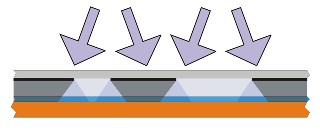 |
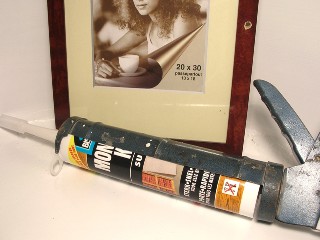 |
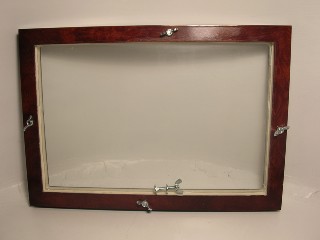 |
We need two medium-sized photo-frames with a rather wide wooden or plastic frame. Remove the backplate and other stuff. we only need the frame and the glass. While lining the two frames back-to-back, we drill some 6mm-holes through both frames
The glass should line up with the backside of the frames, so we need to fill up some space. Using an elastic type of glue, we secure the glass using some small dots of glue first. After this has set, we fill up the entire space between the frame inside and the glass.
After a long time (the glue must set completely) we can make the clamp complete, using M5-type nuts, washers and bolts. Be carefull not to tighten the bolts to hard. Glass is breakable ...
A face-tanner delivers the materials for the lighting itself: we only need two tubes and their electrical components, and the timer. The rest is kept in reserve.
the schematic shows how to wire the lights. Be careful, work with respect fot electrical hazards. A wooden frame will support the tubelights and their components. the top drawing shows a front view, the bottom left one a side view of the construction. Exactly between the two tubes, a support holds our future photoframe-and-messingsheet-with-transparant-sandwich.
The device is put in a closet, which acts as a dark-room. This way, we can use it on a bright day as well.
